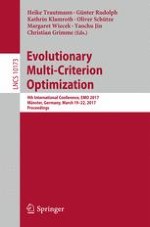2017 | OriginalPaper | Chapter
An Empirical Assessment of the Properties of Inverted Generational Distance on Multi- and Many-Objective Optimization
Authors : Leonardo C. T. Bezerra, Manuel López-Ibáñez, Thomas Stützle
Published in: Evolutionary Multi-Criterion Optimization
Publisher: Springer International Publishing
Activate our intelligent search to find suitable subject content or patents.
Select sections of text to find matching patents with Artificial Intelligence. powered by
Select sections of text to find additional relevant content using AI-assisted search. powered by
